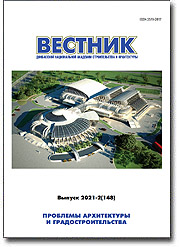Progressive Methods of Compositional Formation of Recreational Areas on the Example of World Design Experience
Abstract: This article examines the main methods of compositional formation of recreation sites on the example of domestic and foreign design experience. The analysis of the existing most progressive and large recreational zones in different cities is carried out in order to identify the main patterns of the formation of the composition of the projected territory. For the analysis, objects that are diametrically opposite in organization and design solution were selected, located on the territory of different states, each of which has its own mentality, characteristics, culture and traditions. As a result of the work done, regularities in the design of areas of short-term rest were revealed, and the main differences in approaches to organizing space were found. As a conclusion to the work done, recommendations are given regarding the possibility of using compositional solutions in the world design experience for the development of recreational areas in the Donetsk region.
Keywords: short-term rest, world and domestic design experience, Donbass, modern park, composition formation, landscape, recreational zone, trends, resources, urban planning, urban planning and compositional techniques.
Pages: 106-112.
For citation:
For citation: Knyajhik, O. I.; Odinochkin, Ye. A. Progressive Methods of Compositional Formation of Recreational Areas on the Example of World Design Experience. – Text : electronic. – In: <em>Proceeding of the Donbas National Academy of Civil Engineering and Architecture</em>. – 2021. – Issue 2021-2(148) Problems of architecture and urban planning. – Р. 106-112. – URL: https://donnasa.ru/publish_house/journals/vestnik/2021/2021-2(148)/st_15_knyagik_odinochkin.pdf (date of access: 20.05.2025). – ISSN 2519-2817.

Issue 2021-2 (148)
Journal: Proceeding of the Donbas National Academy of Civil Engineering and Architecture
Publish house: Donbas National Academy of Civil Engineering and Architecture
Journal: Proceeding of the Donbas National Academy of Civil Engineering and Architecture
Publish house: Donbas National Academy of Civil Engineering and Architecture
